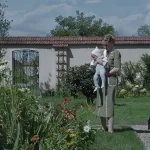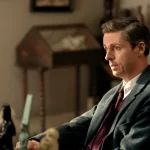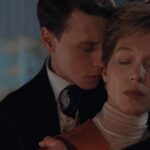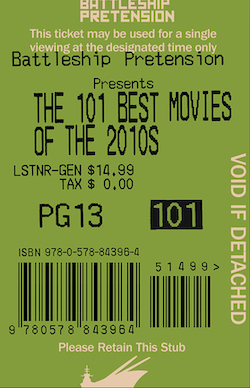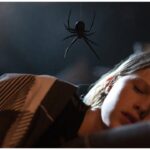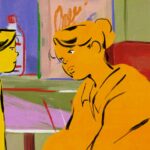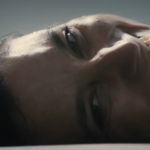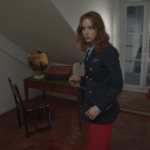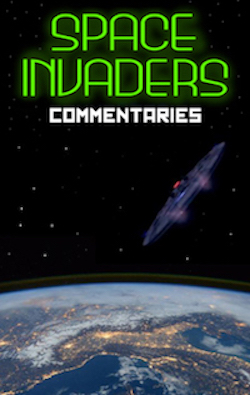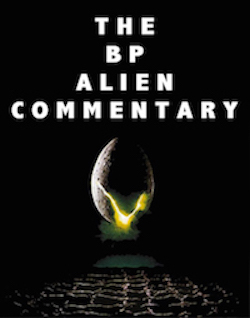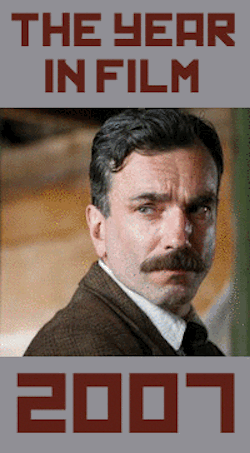A Matter of Life and Death: Planes of Action, by Scott Nye
Had the pleasure of taking in the new 4K restoration of Michael Powell and Emeric Pressburger’s 1946 spiritual wartime drama A Matter of Life and Death this past weekend. I’d seen it once before, on TCM, almost ten years ago, and despite being in the throes of love with their work, had trouble seeing this as anything near The Red Shoes or Black Narcissus or even Tales of Hoffmann, the latter of which I was still struggling with a bit to be sure. Upon revisit, I still think it’s a bit clunky in areas – Kim Hunter isn’t given much to do, and anytime Heaven is depicted as a realm of paperwork and court processes, it seems an abject failure of imagination – but its strengths seemed far greater than they once did. In particular, it retains a consistent tension between life and afterlife, felt not just in the way the two realms directly intersect, but in the way the characters, and the film itself, seem to straddle two worlds of one kind or another.
This is established even in the famous, tremendously moving first scene between Squadron Leader Peter Carter (David Niven) and radio operator June (Kim Hunter) as he’s in a wrecked plane plummeting towards Earth and just hoping to have a nice chat with a nice girl before his time’s up. Now, today, there might not be anything particularly remarkable about a telephone call, aside from the circumstances, but though telephones were familiar enough to a wartime audience, they were not nearly as common as they would be even five years later. I had trouble finding numbers for the United Kingdom, where the film was made (and which, it should be noted, suffer heavy destruction over the course of the war), but in the U.S. alone, the presence of a phone inside a housing unit shot from 36.9% in 1940 to 61.8% in 1950. These phones were typically in common areas – the lobby of an apartment building or a living room in an upper-class family home. The notion of having as intimate and intense a conversation as Peter and June have in this film over the distance that they have it would be extremely uncommon indeed, and something akin to a spiritual connection.
Then Peter misses his date with death (or rather, death misses it with him), and things really start to get rocky. He comes to on a beach, itself a boundary between the world of land and the world of sea. [Note – these screencaps come from the transfer of the film available on Filmstruck, not the 4K restoration, which is considerably nicer]
Luckily, it’s quite near where June lives – he runs to her and they fall in love, but death comes knocking in the form of a beheaded French aristocrat (to think the French Revolution was as far removed from 1946 as the Civil War is to today), and Heaven still expects Peter’s imminent arrival. He gets a stay while they consider an appeal, but from this moment onward, the bridge between these two planes flickers in and out of our vision.
This is most clearly illustrated when Peter is put under sedative, napping as June and Dr. Frank Reeves (Roger Livesey) play ping-pong. He, locked in dreams, separated by a window to their lively sport.
Even the ping-pong table itself provides that sort of separation…
…let alone when time is paused for Peter, who comes running only to find his friends cannot respond.
But the scene that most caught my eye in this regard, and which continues to most fascinate me, is when June comes for Frank in the first place, hoping he might be able to help Peter with what they understandably feel to be the beginnings of some kind of mental break. What with the discussions of time freezing and French aristocrats suddenly appearing and the like.
Here, we’re introduced to Frank as he’s peering through his camera obscura, a device that works through mirrors to reflect and refract images it receives, and which here is used as a way to spy on their small town. One had to pass the time somehow before we all just wasted it in front of screens, so why not make your own? This is itself a sort of Heaven-and-Earth dichotomy, looking down on the unsuspecting living, guessing what they might need him for next. Notably, Frank, and soon June, become the operators of the machine, the two who are able to move from plane to plane as Peter does.
When June comes to the house, she has to pass through a plane of her own, from the rear-projection screen (that’s her waving in the distance)…
…into the space of the main action.
And then, when she and Frank talk over the facts of the case on his balcony, we start to catch just a glimmer of her reflection in the windowpane – a sign, perhaps, of the way she’ll pass between Heaven and Earth near the film’s conclusion, but at the very least a nod to the two selves, the body and the spirit, that occupy us at all times.
Whether Powell and Pressburger intended all these allusions, I could not say and don’t much care. It is a mark nonetheless of their considerations of aesthetics, of the space they allow their characters to occupy, and how much it can come to suggest. This is a haunting film, suffused with the way the dead occupy the living, and the living the dead, with a calm sort of acceptance that I’ve seen in very few Western films (Alain Resnais’s Love Unto Death is the other major entry in this small band). These frames are but a fraction of all the ways they find to express and explore that connection.












